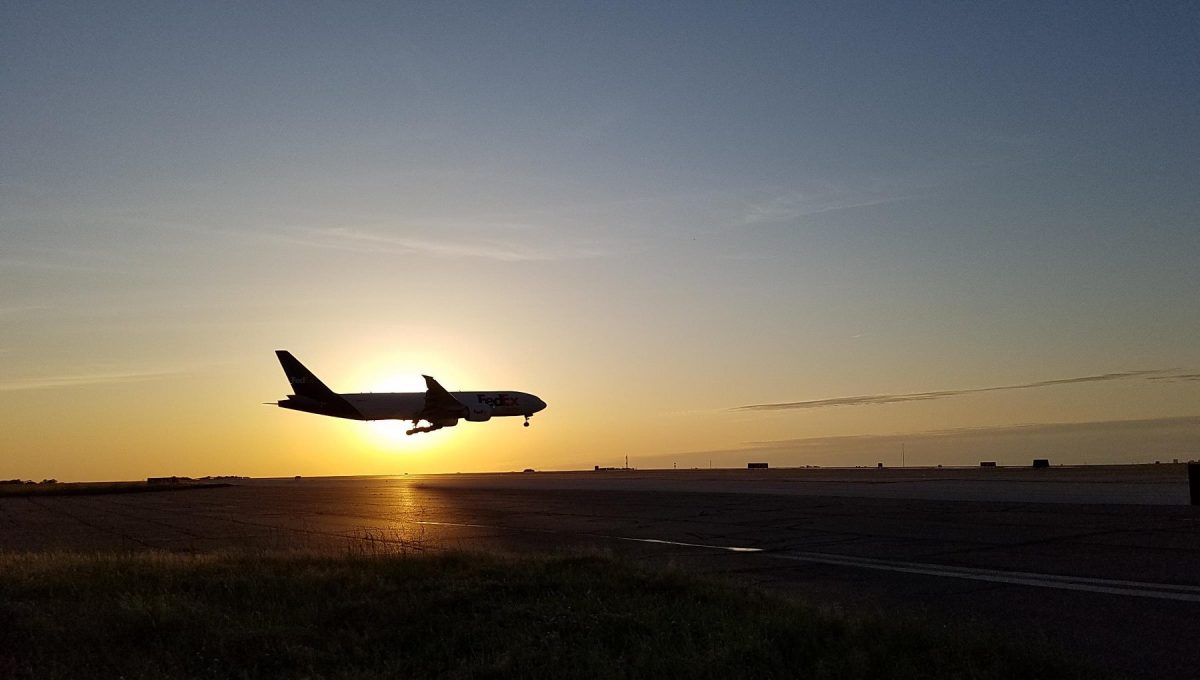Rolling into the parking lot at Memphis International Airport (MEM), the garage arm lifts without stopping to take a ticket. You don’t hunt for a spot. You pull into the spot you reserved and paid for online.
Inside, natural light spills into the expanded ticketing floor from a massive wall of glass that replaced the gift shops and coffee shops along the airport’s north wall. A buzz of your phone says your airline knows you’ve arrived and have been checked in.
You scan your face at a baggage kiosk. It prints your claim ticket. You attach it to your bag, and drop it on the appropriate belt and walk away.
The Transportation Safety Adminstration (TSA) agent scans your face again, no photo identification needed. You walk through a security portal and you keep walking, unless the system has flagged an inadmissible item in your carry on.
In the concourse, you walk to the coffee shop counter. Without ordering or standing in line, really, the clerk calls your name and hands you your order.
This is where MEM is headed, as outlined in its proposed new master plan. Lots will likely change before the scenario becomes reality. But airport officials are working fast on it to try and capture some money from the federal Bipartisan Infrastructure Law, which has earmarked $15 billion for airport improvements projects across the country.
Airport officials just published its strategic overview, a document that drives decisions for the next one to three years, explained MEM president and CEO Scott Brockman. The master plan is different, though, setting out goals in the longer term.
“Obviously, the entire world is going to more technically advanced programs,” Brockman said. “Airports are no different. We are moving towards much more seamless travel.”
Airports around the world are already testing much of the future-sounding tech described above, Brockman said. Airports in the future will likely be easier to traverse, with shorter wait times, fewer human interactions, and more seamless transitions between stages, like from ticketing to security for example. Wireless internet and mobile phones will likely push much of these advancements.
But physical changes will help push the future at MEM, too, Brockman explained. For example, the north wall of the ticketing floor and the structures there (River City News & Gifts, a temporarily closed Starbucks, and a temporarily closed Maggie O’Shea’s restaurant) would be removed, have their spaces pushed out all the way to the street, and replaced with floor-to-ceiling glass. The stairs and escalators now running through the middle of the ticketing floor would be moved out to the edges of the building. It all “cleans up the lobby,” Brockman said, but also makes it more functional.
“It gives us the chance to expand the security checkpoint to allow for additional lanes for the TSA, which, then, allows for greater throughput, which cuts down on the amount of time people stand in line,” Brockman said.
Moving the stairs would also allow for a fifth belt in the baggage claim area. This would allow passengers to spread out, give the airport more flexibility, and “make it a much more pleasurable experience,” Brockman said.
The master plan includes many more improvements, including a de-icing facility for aircraft. But they’re not cheap. Brockman said the price tag could range from $350 million to $500 million, and reminded that the recent modernization of Concourse C cost $250 million. Brockman also reminded that the airport gets no city or county tax funding and wouldn’t get any for these future improvements.
“That is why we’re really pushing hard to move forward — taking elements of the master plan even before the master plan is published and try to get this funding,” he said. “It’s through the federal government, the Bipartisan Infrastructure Law. If we can get funding through that program, then we will move this process forward quickly.”
